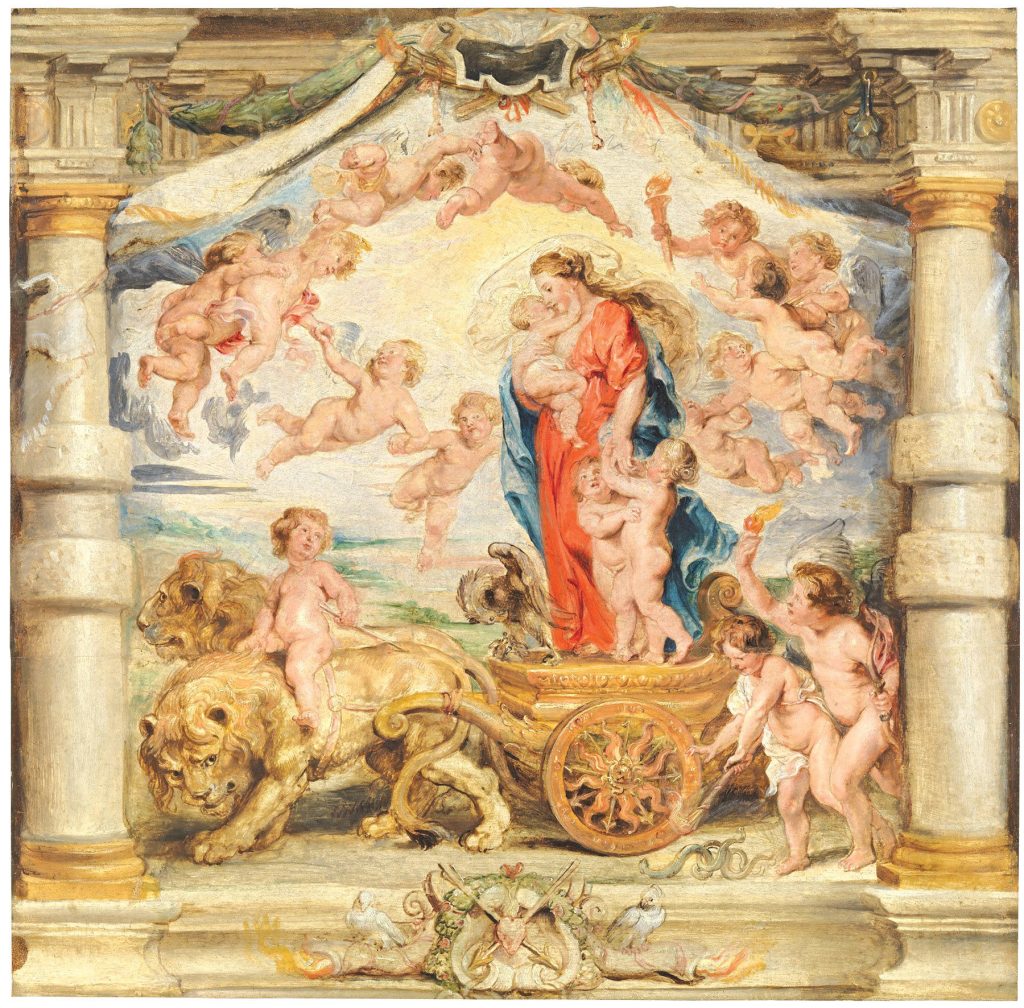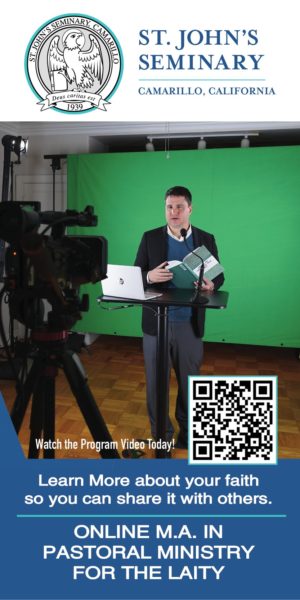Editor’s note: This weekend, Feb. 19—21, USC’s Institute for Advanced Catholic Studies will host a conference on “The Future of the Catholic Literary Imagination.” The following is adapted from Archbishop Gomez’ letter of welcome for the event.
We all know that Catholicism is not an ideology or a philosophy or a set of rules.
Catholicism creates a culture. Because Catholicism is a way of living born from the encounter with a divine person, Jesus of Nazareth, who is the Word of God and the Son of God humbling himself to come among us in human form.
With the incarnation, the world becomes “charged with the grandeur of God,” the poet and Jesuit priest Gerard Manley Hopkins wrote.
With the incarnation, earthly things become “sacramental” — signs and instruments that communicate divine realities. Words can now “do things” with divine power. This is my Body, transforms bread into the flesh of the Savior. I absolve you, brings God’s forgiveness to a soul lost in sin.
By sharing in our humanity, Jesus makes our humanity capable of sharing in his divinity. Our lives in a way become a kind of “work of art” that we are creating with our Creator. And that is the beginning of Catholic art.
For nearly 20 centuries, the world’s greatest artists were inspired by religious themes. By the search for God in a fallen world and by the great questions of human existence — who are we, where do we come from, why do we suffer and what is it that truly matters?
Dana Gioia, a Catholic poet from here in Los Angeles, has written an important essay called “The Catholic Writer Today.” In it, he describes how the Catholic influence in literature and the arts has all but disappeared since the middle years of the 20th century — not only here in the Americas but everywhere in the West.
We can point to any number of causes for this — the spreading of secularism and materialism; the marginalization and privatization of religious experience; the commercialization of culture; the displacement of art by entertainment and popular media.
Whatever the cause, it is clear that our societies in the West are embarked now on a great social experiment. At the root is an attempt to forget and reverse the incarnation.
Daily life today is organized and operates as if there is no God or as if he has no relevance to human affairs. And as we see every day, a world without God only degrades the human person and diminishes human community.
So one important task that we have as Catholics is to restore the Catholic culture that has been lost. It is not about building new catacombs where we can retreat. It is about building a new culture and creating a new world — founded on a new encounter with God and the beauty and truth that he reveals to us in Jesus.
This is what the recent popes have been calling the new evangelization. It means raising up, in every field and walk of life, a new generation of Catholics who are ready to bear witness to God’s mystery and mercy, to the beauty of his creation, and to the dignity and destiny of the human person made in his image.
The first missionaries to our continent shared the truths of the faith through the beauty and “language” of the arts. They created statues, paintings, retablos, music and drama. They taught people how to play music and how to read. These first missionaries used the arts and the media of their culture and times to spread the seeds of the Gospel.
Today, the new evangelization needs new art and new artists. The new evangelization needs stories and songs, poems and novels and plays, sculptures and architecture, paintings and symphonies.
The evangelization of culture does not mean that everyone needs to know and appreciate classical music or art history or read the greatest literature. Most of us do not. But as Catholics we need to help create a cultural environment in which the great themes of faith and truth and beauty can be explored and shared.
The people of our times are not satisfied by the temporary consolations and diversions of our consumer, secular society. Their hearts are troubled. They are restless to know that their life has value and meaning. They want to know love and wholeness and community. They want to know that there is something that lies beyond here, something more than this life.
Catholic art has a unique power to speak to their search for transcendence. So we need to summon a new generation of Catholics who are inspired to make great art that draws from their faith and religious experience.
So let us pray for artists and writers, students, teachers, critics and readers.
Let us entrust them to the Mother of God. May she guide a new generation of artists in their search for beauty, truth and love. May she help them to discover the One who created each of us for a love that never ends, the One whom Dante called: The Love that moves the sun and the other stars.
“The Future of the Catholic Literary Imagination” is free and open to the public. It will be held at the Caruso Catholic Center at USC. For more information and the conference schedule, visit cli.ifacs.com.

